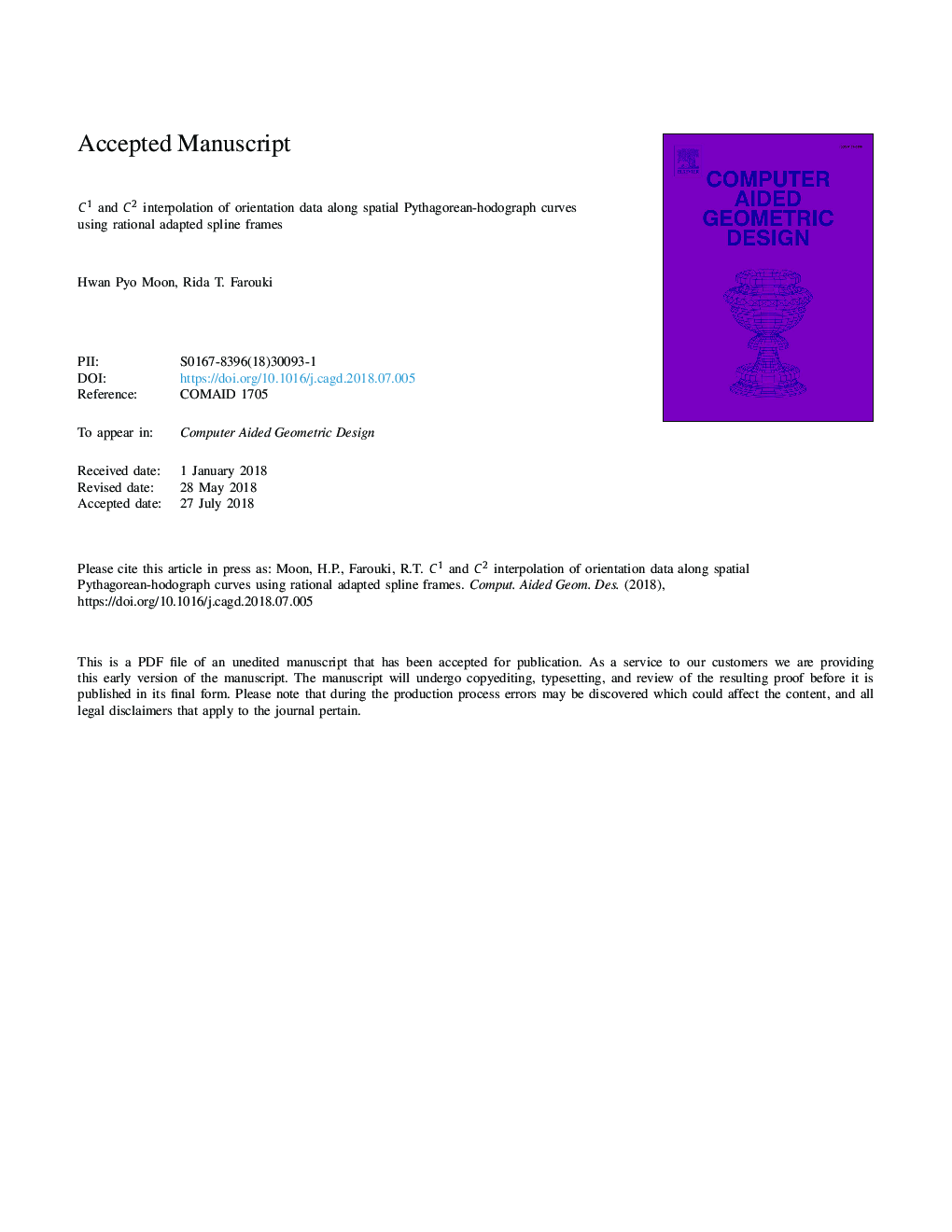| Article ID | Journal | Published Year | Pages | File Type |
|---|---|---|---|---|
| 10132593 | Computer Aided Geometric Design | 2018 | 25 Pages |
Abstract
The problem of constructing a rational adapted frame (f1(ξ),f2(ξ),f3(ξ)) that interpolates a discrete set of orientations at specified nodes along a given spatial Pythagorean-hodograph (PH) curve r(ξ) is addressed. PH curves are the only polynomial space curves that admit rational adapted frames, and the Euler-Rodrigues frame (ERF) is a fundamental instance of such frames. The ERF can be transformed into other rational adapted frame by applying a rationally-parametrized rotation to the normal-plane vectors. When orientation and angular velocity data at curve end points are given, a Hermite frame interpolant can be constructed using a complex quadratic polynomial that parametrizes the normal-plane rotation, by an extension of the method recently introduced to construct a rational minimal twist frame (MTF). To construct a rational adapted spline frame, a representation that resolves potential ambiguities in the orientation data is introduced. Based on this representation, a C1 rational adapted spline frame is constructed through local Hermite interpolation on each segment, using angular velocities estimated from a cubic spline that interpolates the frame phase angle relative to the ERF. To construct a C2 rational adapted spline frame, which ensures continuity of the angular acceleration, a complex-valued cubic spline is used to directly interpolate the complex exponentials of the phase angles at the nodal points.
Keywords
Related Topics
Physical Sciences and Engineering
Computer Science
Computer Graphics and Computer-Aided Design
Authors
Hwan Pyo Moon, Rida T. Farouki,
